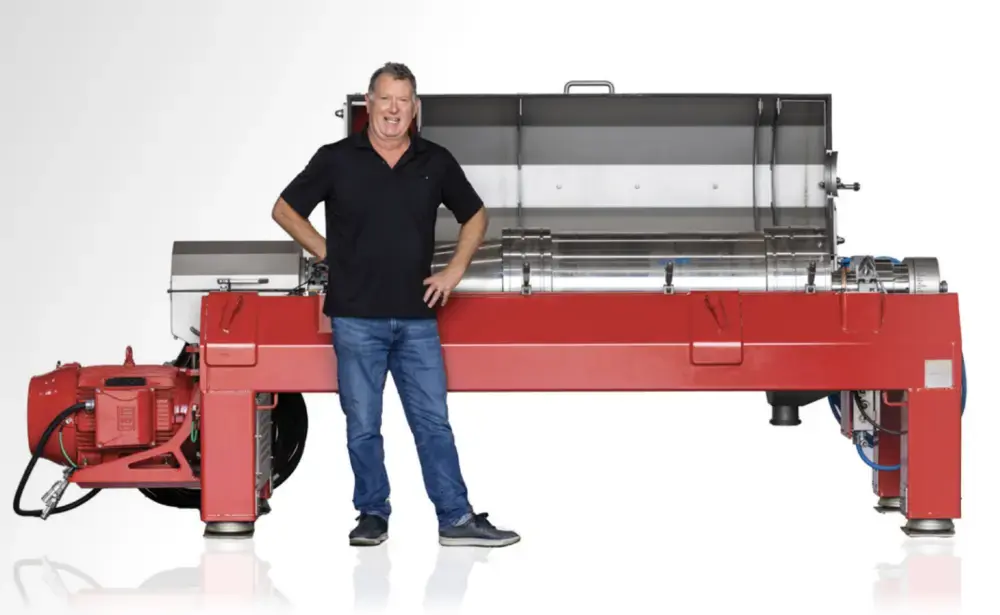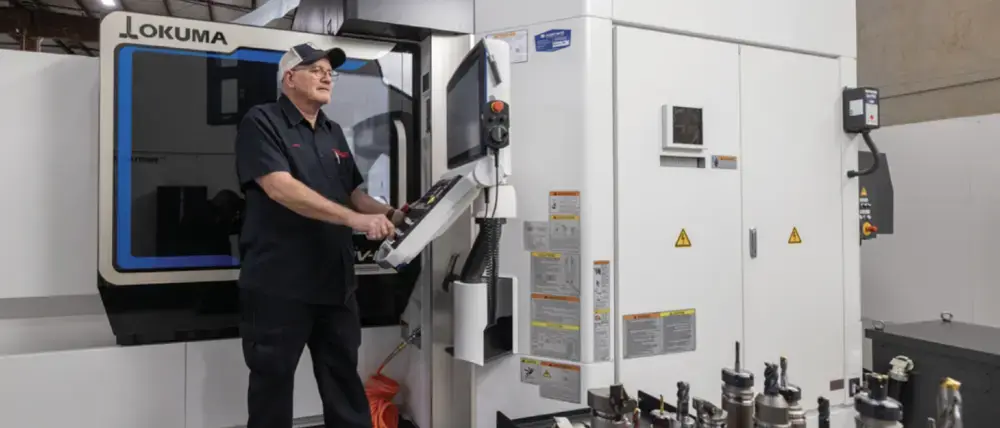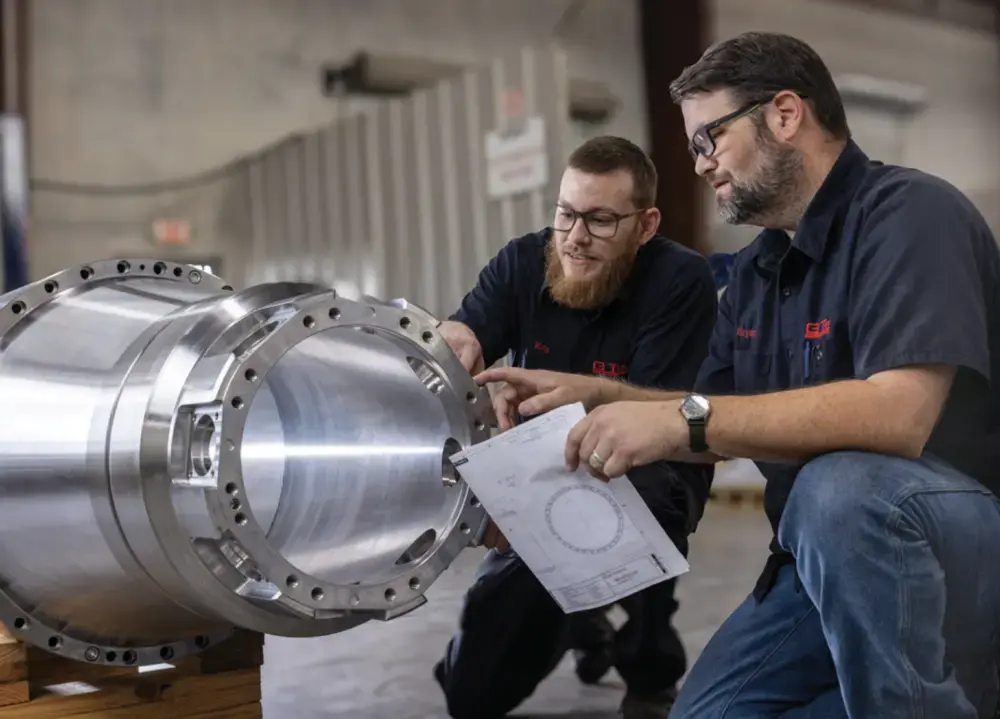GTech Practices the Art of Staying Nimble
Combining start-to-finish control with the ability to pivot quickly, this NARA member's business strategy is helping to grow the rendering part of its business.
By Sharla Ishmael

Kevin Bell grew his youthful fascination with machinery into his first engineering company in New Zealand at age 23. Now he’s the CEO of GTech USA and says it has never been more important for businesses to make the most efficient use of resources, which drives constant innovation at his company.
For GTech CEO Kevin Bell, machinery has been a lifelong passion. Growing up in New Zealand, his father's transport company gave him the chance to get his hands dirty rebuilding engines and gearboxes. As a teenager, he put that knowledge to use racing cars. He also completed an apprenticeship on machining and maintenance. Then after a brief and unsatisfying stint of driving trucks for his father's company, Bell decided to launch his own engineering company at the ripe old age of 23 — GTech Bellmor.
Today, Bell leads GTech USA, a private manufacturer with a growing presence in rendering, oil and gas, environmental services and industrial markets — still operating in New Zealand and Australia as well as its U.S. headquarters in Houston, Texas.
In a way, things have come full circle since the early days of Bell's first company when his business got off the ground making parts for a local rendering business.
"We had a new by-products plant in the small town I was in, and I started grinding the hole plates, the mincer plates and then started making other parts, too," Bell explains. "We got to know folks at Hutchison Hayes out of Houston and started manufacturing spare parts for their centrifuges. We got into rebuilding the decanters and the separators, and then that's how it's just grown from there really."
For reference, Hutchison Hayes was founded in the 1920s and pioneered separation technology for oilwell drilling and other industries before being acquired by Alfa Laval in 2008. That history matters because some of those machines are still around, as are some of the people who built them.
Bell moved to Houston in 2012 and, through series of partnerships and acquisitions, opened GTech USA. Initially, the U.S. company concentrated 100% on the oil and gas business. Around 2015, Bell brought in rendering veteran Dennis Edwards whom he knew from working with Hutchison Hayes.
"After we brought Dennis on board, we grew the rendering portion of our business in the U.S.," Bell says. "That has helped spread our risk quite a lot because oil and gas is either boom or bust. And we've also gone back to our core business with rendering. Today, oil and gas makes up 48% of GTech USA's customer base and rendering has grown from zero to 22% and counting."
Spreading business risk is just one way GTech stays nimble. Within the rendering part of its operations, innovation, customization and a sharp focus on customer service have allowed this relatively small manufacturer to establish a foothold and compete with much bigger companies.
As market conditions change, GTech has presented solutions to meet the challenges. For instance, as fat prices have gotten more valuable on the rendering side, the company has introduced equipment that's even more effective at recovering and recycling edible and inedible oils and by-products.
One way to do that is utilizing dissolved air flotation (DAF) systems, which use air microbubbles to remove suspended solids, oils, fats and other impurities from wastewater. This enables the material to float to the surface for skimming and removal, providing more valuable products to sell plus cleaner wastewater for reuse.
"We've got a new product with three-phase decanters for DAF on the waste stream," Bell explains. "We've had a pretty good run with that. It's a big push for us to look at the DAF recycling for the fat that comes off in their plants because it's a big revenue stream for renderers."
"In recent years, with much lower cattle numbers in the U.S. from droughts and so forth, renderers are looking closer at their waste streams and what they can actually optimize," he adds. "It's something they probably didn’t have as much incentive to do in the past as efficiently as they possibly could."
During a tour of the shop, Bell points to a thoughtful feature on a sparkling new Echo 7 three-phase centrifuge waiting to ship out to a large beef processor for its DAF recovery — a hydraulic lid that will make any future cleaning or repairs much easier and safer. That sort of detail comes from first-hand engineering knowledge of working with the machines in an actual operating environment.
Another GTech innovation that grew out of practical experience was the use of skids. GTech's skids are turnkey solutions that make it possible for its technology to be easily integrated into existing systems or relocated anywhere an operation requires. Being able to customize setups for customers is a big advantage made possible through a deliberate strategy of local design and manufacturing.
"We do all our electrical components or electrical engineering here in Houston," Bells says. "We build all the stuff here. We have about four mechanical and electrical engineers in New Zealand, but we brought Hayden Perham, one of our really talented engineers, across from New Zealand so we could have our electrical engineering automation done here in Houston — and that makes a massive difference."
"We're in total control of our end result and we're very custom," he adds. "We can be a lot more accommodating with configurations because we are a small manufacturer compared to the big guys in custom design fabrication. We don't do any subcontracting — it's all done within the company, which is really important for quality and obviously serviceability and backup. We've also got a whole building of spare parts — at the moment, there is probably $8 million to $9 million worth of parts on the shelf. So, if you need something, call us and we can ship it out the same or next day."

John Lindley is a longtime GTech employee.
Bell is proud of how long some employees have been with GTech. For decades, in many cases. It's their knowledge and pride in workmanship that he says sets the company apart for quality and service.
"The secret to the success of the company is we've got great people that work here, and we still call it a mom-and-pop operation," Bell explains. "We're not corporate America. We do things probably a little different than most other companies. The equipment we build is just as good as anybody else's and perhaps made with a little more attention to detail."
"We build our equipment pretty robustly and a lot of thought has gone into maintenance and servicing it because we've come from the floor," he says. "It makes it easier when you understand how to service it in the plant. Some people don't think about how in five years are you going to get that equipment down that you just put up? We do."
Something else GTech has put a lot of thought into is the changing of the guard in its customers' workforces, as many older workers are retiring. The company is focusing on automation to help make that transition to younger workers who don't possess the same institutional knowledge or feel for the machinery.
"That's the challenge," Bell admits. "So, we're trying to take the operator away from the machine because that type of skillset is not there. And it's the same in all industries. The old guys in the industry can go and look at the product and know what changes to make. We are really pushing automation and control systems to make it user-friendly for young people, so it's all touchscreen. One of our big drives in the next couple of years is to take the guesswork out of the process."
In addition to integrating automation, Bell says he thinks there will be a lot of capital investment to update equipment in U.S. rendering plants over the next several years to meet more exacting standards for products like tallow and used cooking oil (UCO). Because plants here are so much bigger than in New Zealand, for instance, they are much more expensive to update.
A year ago, GTech made the decision to bring even more manufacturing to Houston from New Zealand. It saves customers serious money on freight — especially in light of the current tariff situation — and it shows that GTech is committed to the U.S. It also enables the company to deliver equipment quicker.
"I've had customers who said they had been waiting six months for a simple part, and they've had enough," Bell points out. "They want to buy American. If someone rings me up today and wants to know when they can get a centrifuge, I can deliver an Echo 4 in two or three weeks. Delivery is a big plus for us. And so is pushing the American build.
"One of the things I really like about the rendering business is once they know you and that they can rely on you, then they are very loyal customers," he adds. "And we strive to earn their loyalty every day. It's a two-way street."

Kristopher Streety and Brian Appodaca work in GTech’s Houston headquarters.
